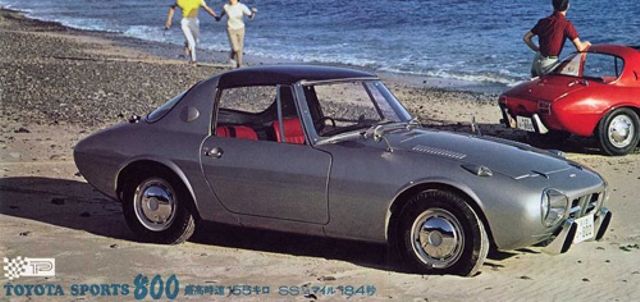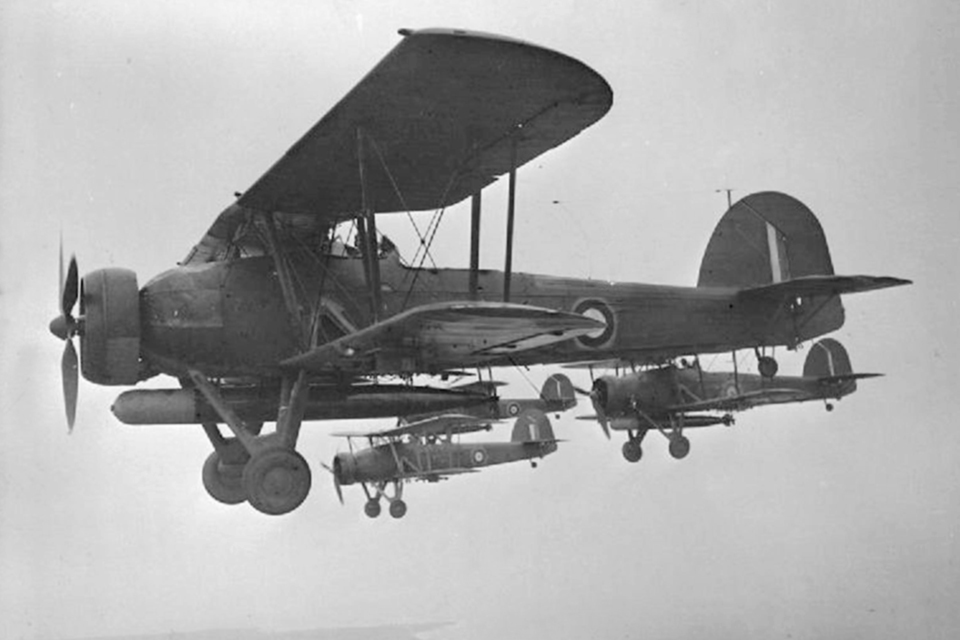Fleet Air Arm Myth #5 Taranto inspired Pearl Harbor

The Japanese have taken many Western concepts and improved on them. Trains, home electronics, and vending machines for used underwear are just some of the items that spring to mind. [1] Popular opinion in the author’s twitter feed is that this includes raids on harbours by carrier air power. The logical line being drawn that the attack by the Fleet Air Arm on Taranto on 11 November 1940 inspired the 6 December 1941 attack on Pearl Harbor by the Imperial Japanese Navy Air Service.

The Royal Navy had been considering how to attack a fleet in harbour for the two decades preceding the Second World War, after the frustrating experience of only having one go at the German High Seas Fleet in the First when they refused to come out for a second round after the Battle of Jutland. They’d also carried out the first carrier-based air raid on 19 July 1918 on the airship base at Tondern. [2] Putting the two ideas together was in fact on the to-do list when the armistice got in the way.

The Taranto raid was no spur of the moment thing, planning for an attack had started in 1935 onboard HMS Glorious during the Abyssinian Crisis and was updated and rehearsed in Malta during the Munich Crisis of 1938. RN intelligence had established the depth of the nets surrounding the Italian battleships and it was determined that they’d allow a torpedo to pass underneath. The trick would be stopping them hitting the 40’ deep seabed, achieved by attaching a wire to the front. They wouldn’t hit the hull but handily the British had developed the Duplex torpedo pistol that was set off by the magnetic influence of the ship passing overhead. Or not, which is helpful if you’re HMS Sheffield being attacked by Swordfish that have mistaken you for Bismarck. In the week preceding the raid multiple convoys were routed across the Mediterranean while the Fulmars from Ark Royal and Illustrious ensured no Italian aircraft observed the latter’s task group approaching Taranto. [3] Consequently, the raid came as a complete surprise to the Italians who’d thought they knew where all the RN’s ships were, and that they’d see any naval attack coming. Despite this contrary to stereotypes of Italian martial prowess their anti-aircraft guns were manned and managed to down two of the 21 attackers, as close as you can get to the 10% losses predicted in 1938. In exchange the RN had put 3 battleships on the harbour bottom, although as it was fairly shallow two were back in service within a year, the third still being worked on when Italy surrendered in 1943. The fleet was also moved to Naples to make any further attacks more challenging. Although Taranto briefly altered the balance of power in the Mediterranean and gave the RN more freedom of manoeuvre it would still be contested until 1943, being the biggest navy in the world only gets you so far when you’re also the busiest.
Pearl Harbor clearly had a lot of similarities, a hidden approach to ensure the attack was a surprise, torpedoes used in waters previously thought to be too shallow, [4] and most of the sunk ships re-entering the war. Another similarity was the gestation period of the idea. War games at the Japanese Navy War College had modelled a carrier strike on Pearl Harbor in 1927, with a lecture on the subject by one Captain Yamamoto the next year. Fast forward to April 1940 and now Admiral Yamamoto was discussing a raid on Pearl Harbor with the Chief of Staff of the Combined Fleet. Which unless Yamamoto also had access to a time machine means it was impossible for him to have been inspired by Taranto as it hadn’t happened yet.
It is true Japanese naval officers had visited Italy in June of 1941 and one of the 83 topics they discussed with the Regina Marina was the raid on Taranto. [5] However, as the First Air Fleet under Captain Genda started detailed planning for attacking Pearl Harbor in April of that year even this would have provided limited value.
At best then Taranto may have given the IJN some encouragement that their plan could work, but the plan itself was an entirely Japanese concept. Like Kabuki theatre, or convincing Gaijin you can buy used underwear from a vending machine.
[1] The last isn’t a complete urban myth. Yes, yes I did research this. https://www.techinasia.com/japan-used-panty-vending-machines-fact-fiction
[2] Regrettably by this stage the RAF had been formed so were also involved although the majority of the personnel involved had previously been in the RNAS.
[3] This also disproves myth 5b that the RN didn’t use deck parks until operating with the USN in the Pacific. With Eagle out of action Illustrious had to use one to carry the extra Swordfish along with her usual compliment of aircraft. As did any of her class that carried Sea Hurricanes, because making folding wings is hard.
[4] Unless you were the US observer onboard Illustrious during Taranto who spent a frustrating 13 months trying to convince the USN it was possible. Still at least he got to say ‘I told you so’.
[5] 83 is a precise number but the Italians appear to have kept notes. https://www.usni.org/magazines/naval-history-magazine/2016/december/taranto-pearl-harbor-connection
Bing Chandler is a former Lynx Observer and current Wildcat Air Safety Officer. If you want a Sea Vixen t-shirt he can fix you up.


7 DEC (not SEP)
Ha! Well that was the mother of all typos considering I wrote the article on the 7th of December after the anniversary prompted me!
My bad, Bing. I should have picked that up. Apologies. HK
Sorry, Bing, but someone had to point it out – it was just too jarring.
Pearl Harbor Attack; December 7th,1941. A day that will live in infamy. September 6, 1941 is the day the first proto used women’s underwear machine was opened by a Mr Aoki Fujii, Mr. Fujii was a local owner of a large laundry service that included many geisha houses. After many requests from locals who were willing to pay for used female underwear: Mr. Fujii built a small hut attached to the back of his laundry building. The hut had space in it for one person and a basket filled with used women’s underwear . The customer would knock on the front of the hut, a small door would open and the customer would place payment inside the small door. Then a drawer would extend out from the hut with a small neatly yet discreetly packaged piece of used women’s underwear. This became quit the tidy side hustle for Mr. Fujii. Unfortunately for Mr. Fujii, he was killed during the first Godzilla attack on November 3, 1954. “Did your research….” Sure you did?
as written: “ being the “biggest” navy in the world only gets you so far…”
So I checked: Which country had the most “powerful” navy in WW2?
by Desiree Arceneaux, studied Biology & Psychology at California Institute of Technology
Updated December 20, 2018 · Upvoted by Gary Schuster, M.S. Aerospace and Aeronautical Engineering & History, University of North Dakota (2017) and Will Bentley, Retired USMC after 28 years: service as officer and enlisted, active and reserve · Author has 1.2K answers and 2.2M answer views
Originally Answered: Out of all the naval forces that took part in WWII, which nation had the “strongest” navy and why?
At the start of World War II, the generally acknowledged “ranking” of navies was the Royal Navy, the United States Navy, and the Imperial Japanese Navy. However, this was based on the mainstream naval doctrine of the day, which greatly underestimated the power of aircraft carriers and overestimated the role of battleships.
In reality, the Imperial Japanese Navy was certainly the most powerful naval force in the world due to its concentrated carrier force of ten aircraft carriers concentrated in a single unit, combined with hands down the best-trained carrier pilots and most well-developed naval air tactics in the world. Even though their overall fleets were larger and more powerful on paper, the United States only had seven carriers and the Royal Navy eight. Moreover, neither of those navies concentrated more than two or three carriers in a single unit, nor could they match the sophistication of Japanese tactics.
Japanese naval power took a death blow with the loss of four fleet carriers and a huge portion of their best pilots at the Battle of Midway, while United States naval power skyrocketed throughout the war due to the absolutely massive number of carriers built and the rapid refinement of doctrine. The United States built a staggering twenty-four Essex-class fleet carriers during the war, plus light carriers and escort carriers, becoming more powerful than every other navy in the world put together.
The Royal Navy, on the other hand, quickly lost a huge portion of their pre-war carriers: HMS Courageous to submarine action in 1939, HMS Glorious to surface action in 1940, HMS Ark Royal to submarine action in 1941, HMS Eagle to submarine action in 1942, and HMS Hermes to carrier air attack in 1942. Only the HMS Furious (sister to Courageous and Glorious) survived, along with the small HMS Argus and HMS Unicorn. The construction of the four Illustrious carriers barely kept up with these catastrophic losses, and their fleet carrier strength did not exceed prewar levels until the two Implacable class carriers were completed in 1944.
As a result, the Royal Navy really wasn’t seriously in the running for “world navies” from 1941 onwards.
The Royal Navy was undoubtedly the biggest in the world until sometime after the entry of the US into WW2. Which is why I wrote biggest, the point being if you have to spread that around the globe, as the RN did, you may not be able to dominate a specific region, such as the Mediterranean.
The reason the Japanese could concentrate their carrier force was because they were only fighting in one theatre, which reinforces my point in the article.
It’s also hard to see how losing 5 carriers over 2 1/2-3 years of total war could be called quickly losing them.
Finally as it was one of only two navies capable of operating simultaneously in all oceans throughout the war your final paragraph is fallacious. Indeed in 1945 it had fleets operating in the Atlantic, Indian, and Pacific oceans with the final two engaging the Japanese right up until VJ Day. Arguably that’s a presence over a wider area than the USN, even if the total numbers deployed weren’t as great. Japan on the other hand was never a ‘world navy’ and German attempts consisted of a few U-boats operating in the Indian Ocean.
The US and Japan werent involved in naval war till Pearl Harbour( Dec 41) so of course they didnt have any carrier losses before then.
1942 was very different with US losing 3 carriers and Japan 5 . The US even requested the RN loan HMS Victorious for Pacific duties in 1942 as sinkings and damage reduced them to 1 operational carrier in that theatre.
My numbers see the IJN with 8 carriers active at the time of Pearl Harbour not 10.That excludes the tiny first carrier Hosho ( first ship into service built from keel up as carrier) equivalent to HMS Argus.
Damnit!
This blows my the Swordfish was the most important aircraft of WW2 thesis out of the water..
Curse you Bing and your rigorous research!